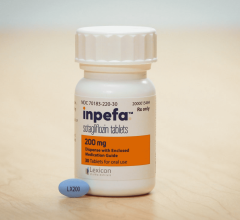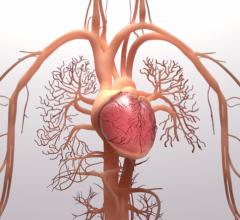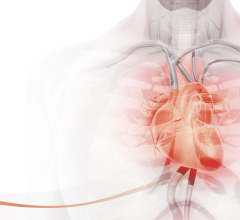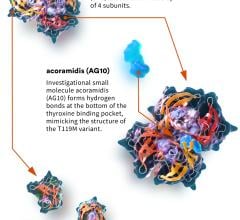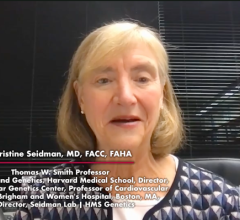
Getty Images
May 14, 2024 — One of the most common genetic heart diseases worldwide, hypertrophic cardiomyopathy (HCM) causes the walls of the left ventricle to become thick and stiff. In about 70 percent of cases, patients with HCM experience obstruction to blood flow, which increases pressures in the heart and can lead to chest pain, shortness of breath and reduced exercise capacity. While invasive interventions can restore selected patients’ quality of life, pharmacologic therapies that are safe, well-tolerated and that reliably improve how patients feel and function remain an unmet need for patients with obstructive HCM.
Now, a phase 3 trial has shown that a cardiac myosin inhibitor called aficamten enhances exercise capacity in patients with HCM and leads to significant relief in the burden of limiting symptoms, improving the quality of patients' lives. The late breaking research was presented by principal investigator Martin S. Maron, MD, director of the Hypertrophic Cardiomyopathy Center at Lahey Hospital and Medical Center (LHMC), today at Heart Failure 2024, a scientific Congress of the European Society of Cardiology. The findings also appear in the New England Journal of Medicine.
“The trial demonstrated that aficamten can reliably and safely lower obstruction to blood flow out of the heart in patients with obstructive HCM using a simple and stepwise dosing regimen and was associated with substantial improvements in clinically relevant endpoints such as exercise capacity and symptoms,” said Maron. “These patients are often on a multitude of medications, and aficamten was effective as combination therapy, but also as monotherapy.”
The phase 3 clinical trial, SEQUOIA-HCM, included 282 patients with symptomatic obstructive HCM from 101 sites in 14 countries in North America, Asia and Europe, making it the largest-ever obstructive HCM trial. All participants were receiving background medical therapy and had reduced exercise capacity. Patients were randomized 1:1 to aficamten or placebo on top of their background medical therapy.
Over the 24-week treatment period, aficamten improved exercise capacity and was also associated with significant improvements in all secondary end points. Efficacy was evident by week 12, with significant improvements in outflow gradients, health status, and symptoms. The incidence of adverse events was similar between patients treated with aficamten compared with placebo.
“It was impressive to see that the beneficial effects of aficamten occurred rapidly and consistently over the treatment period and that the doses could be adjusted effectively and safely using only site read echocardiography measures," said Maron. “It was also reassuring to see that in the very small number of patients found to have an ejection fraction below 50 percent on aficamten, there was no associated heart failure of the need for dose interruption, and that the effect on ejection fraction was reversible with treatment discontinuation.”
Cytokinetics Inc. provided the funding for this study.
Martin S. Maron has received Consultant/Advisor fees from Imbria, Edgewise, Biomarin and Steering Committee fees for SEQUOIA-HCM from Cytokinetics, Incorporated. For a complete list of additional authors and their disclosures, please see the full article in the New England Journal of Medicine.
For more information: https://www.lahey.org/lhmc/
Related content:
Part 1: Hypertrophic Cardiomyopathy: One on One with a Cardiovascular Research Leader
Part 2: Hypertrophic Cardiomyopathy in Focus
“ONE ON ONE” WITH CHRISTINE SEIDMAN, MD, FACC, ON HYPERTROPHIC CARDIOMYOPATHY


 July 10, 2024
July 10, 2024 
